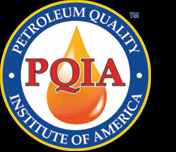PittPenn Quality Motor Oil 10W-30 (April 2010)-a

Purchased in: Edison, NJ
Date of purchase: 3-25-2010
Advisory: Whereas the label on the PittPenn Quality Motor Oil bottle sampled does not say the product meets API SM ILSAC GF-4, its positioning on the shelf at a recognized retail chain, use of terms "API" and "Quality" on the label, and lack of information specific to the API Service level the product does meet, could result in a reasonable person assuming this engine oil can be used in their vehicle as long as the vehicle is not new. Based on the test results for this sample, this could be a dangerous assumption.
Although PittPenn Quality Motor Oil does meet the SAE requirements for a 10W-30, it does not meet the requirements for an API SM ILSAC GF-4 engine oil. The product's volatility of 22 exceeds the maximum of 15, and the phosphorus content at 161ppm is below the 600 required to meet API SM ILSAC GF-4. In addition, whereas there are no API requirements for some of the other parameters examined, the data shown for TBN, calcium, and zinc are only 10 to 20% of what one would expect to see in an engine oil meant for use in virtually any passenger car currently on the road.
Also of concern is the 26ppm of silicon in the sample. Whereas silicone antifoam agents are commonly used in engine oils to suppress and inhibit foaming, the concentration of silicon attributed to antifoam agents is typically less than 1ppm in an engine oil. Concerning is that high silicon levels can be an indication of abrasive contaminants in a lubricant. A silicon level of 26ppm in a used engine oil sample, for example, typically results in a recommendation to change the oil due to the likelihood of abrasive contamination.
PETROLEUM QUALITY INSTITUTE OF AMERICA TEST PROGRAM |
|||
| PHYSICAL TESTS | Standard/ranges-b | Average-e |
PittPenn Quality Motor Oil 10W30-f |
| TBN, mg KOH/g, (ASTM D2896) | 7.3 | 0.7 | |
| Viscosity @ 100ºC, cSt, (ASTM D445) | 9.3 to <12.5 | 10.86 | 10.8 |
| Viscosity @ 40ºC, cSt, ASTM D445 | 69.93 | 67.8 | |
| Viscosity Index (ASTM D2270) | 156 to 167 | 146 | 151 |
| Viscosity @ -25ºC mPa s (cP) (ASTM D5293) | 7,000 Max | 5,093 | 4,540 |
| Volatility, mass % loss, 1 hr, @ 250ºC (ASTM D5800) | 15 Max | 11.6 | 22.5 |
| ELEMENTAL ANALYSIS-c | |||
| Additives | |||
| Nitrogen μg/g (ASTM D-5762) | 837 | 220 | |
| Calcium | 1,920 | 99 | |
| Magnesium, ppm | 10 | <1 | |
| Phosphorus, ppm | 600 to 800 | 775 | 161 |
| Zinc, ppm | 853 | 70 | |
| Molybdenum, ppm | 16 | <1 | |
| Barium, ppm | <1 | <1 | |
| Additive and/or other | |||
| Boron, ppm | 107 | 3 | |
| Silicon, ppm-d | 3 | 26 | |
| Potassium, ppm | <1 | 15 | |
| Manganese, ppm | <1 | <1 | |
| Titanium, ppm | <1 | <1 | |
| Sulfur, ppm | 5,000 max | 3,227 | 3,759 |
| Copper, ppm | <1 | <1 | <1 |
| Sodium, ppm | <1 to 467 | 143 | 15 |
| Vanadium, ppm | <1 | <1 | <1 |
| Contaminants | |||
| Silver, ppm | <1 | <1 | <1 |
| Aluminum, ppm | <1 to 2 | <1 | 5 |
| Chromium, ppm | <1 | <1 | <1 |
| Iron, ppm | <1 to 1 | <1 | 3 |
| Nickel, ppm | <1 | <1 | 1 |
| Lead, ppm | <1 to 1 | <1 | <1 |
| Antimony, ppm | <1 | <1 | <1 |
| Tin, ppm | 4 to 5 | 4 | 3 |
|
a- Click here for product label. b- Standards, shown in orange, are established by API, SAE and others. Ranges, shown in teal, represent the high and low data ranges for the majors 5W-30. c-Test Method for metal analysis is ASTM ASTM D5185. d- Although silicon is used as an antifoam additive in lubricants, concentrations above 7ppm have been linked to contamination from abrasive material, e- Average of the 3 private label API SM brands tested. Click here for brands tested. f- Test results for PittPenn were rechecked (click here for recheck data). |
|||





